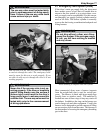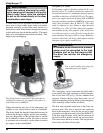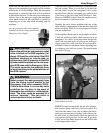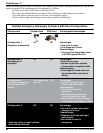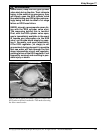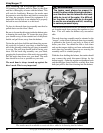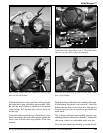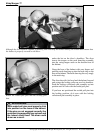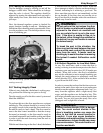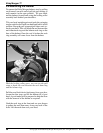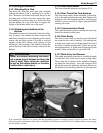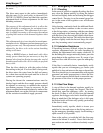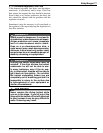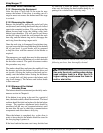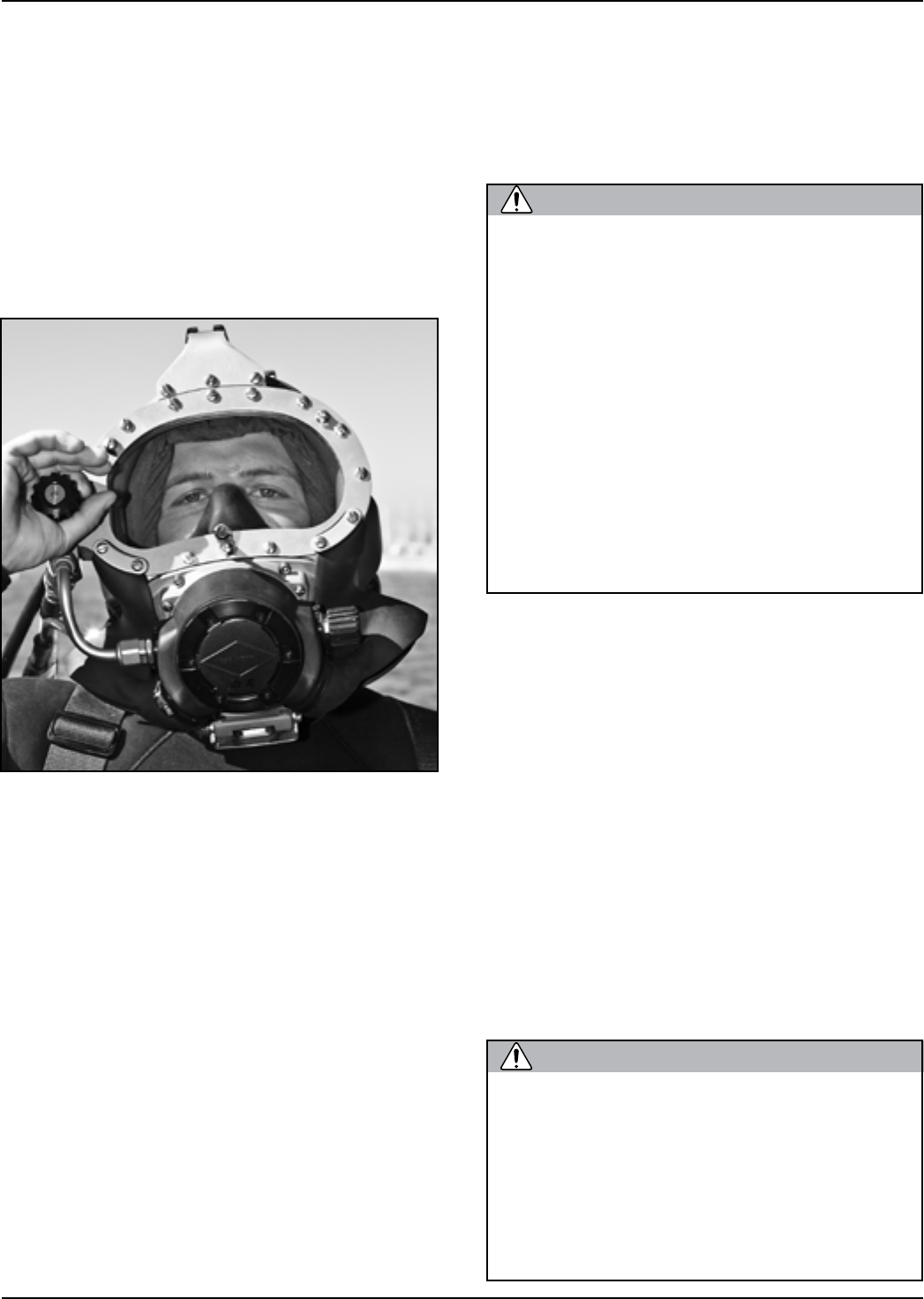
57
© Copyright 1970-2008 Kirby Morgan Dive Systems, Inc. All rights reserved. Document #080626002
Kirby Morgan 77
3.8.6 Testing the Breathing System
Test the defogger system by turning on and off the
defogger control knob. There should be no leakage
when the valve is closed. The regulator should be
adjusted by turning the adjustment knob out until a
slight steady flow starts, then back in until the flow
just stops.
Next, the demand regulator system is checked for
proper function: breathe in and out. Inhalation and
exhalation effort should be nearly unnoticeable. Press
in on the regulator cover. This should produce a strong
burst of breathing gas.
3.8.7 Sealing Integrity Check
If there is any doubt that the helmet is sealing prop-
erly, perform the following test prior to diving.
Turn the supply gas off at the dive control system and
bleed the umbilical.
To perform this test, the diver must have an assistant
standing by. The assistant should be in control of the
gas supply console in the event the diver needs air or
he must be ready to lend a hand. The diver must be
next to the dive control manifold so that the air may
be turned on instantly, or the diver must be ready to
run a hand between his neck and the sealing neck dam
in order to pull the neck dam away from the neck to
allow breathing.
With the neck dam ring on the diver’s head, the helmet
Test the breathing system to make sure that it is op-
erating correctly.
Do not perform this test unless the diver
and his tender are stationed immediately
adjacent to the diver’s air manifold and
you are certain the air is on to the mani-
fold. If the diver is unable to flow air to
the helmet, either through the umbilical or
the bailout, he may not be able to remove
the helmet easily.
To break the seal in this situation, the
diver must put his hand between the neck
dam and the neck, and pull the neck dam
away from the neck. A tender must be
standing by to assist the diver in removing
the helmet if needed. Suffocation could
result.
WARNING
is installed and the locking collar closed. When the
diver attempts to inhale, a suction on the neck dam is
formed, indicating he is achieving a good seal. The
diver must then turn the air on immediately so that
he can breathe. If the diver does not turn the air on
he will not be able to breathe, unless the neck dam is
pulled away from his neck.
3.8.8 Adjust Regulator for Low Work Rates
At very low work rates, such as when the diver is
resting, or during in-water decompression, the diver’s
respiratory rate may be quite slow (10-15 breaths per
minute). When this occurs, the diver’s exhalations
may not be sufficient to move enough breathing gas
through the mask exhaust to adequately wash out
carbon dioxide (CO
2
), if the oral/nasal does not have
a good fit on the diver’s face.
In order to ensure that carbon dioxide does not accu-
mulate in the mask, divers who are at rest underwater
should screw the regulator adjustment knob “out,” i.e.,
away from the regulator, until a slight steady flow
occurs and the regulator can be heard to hiss. This
will help to eliminate any excess carbon dioxide from
the mask. You can also open the steady flow valve
(defogger) until a slight hiss is heard.
WARNING
Excess carbon dioxide (CO2) is danger-
ous. Too much carbon dioxide in the
diver’s breathing system can cause the
diver to feel that he cannot breathe for
comfort. It can also cause headache,
confusion and rapid breathing. In extreme
circumstances, carbon dioxide can cause
unconsciousness. This could lead to suf-
focation and death.



